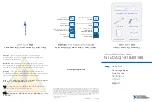
1-2
Cisco ASA Series CLI Configuration Guide
Chapter 1 Configuring OSPF
Information About OSPF
•
Routing decisions are based on cost, which is an indication of the overhead required to send packets
across a certain interface. The ASA calculates the cost of an interface based on link bandwidth rather
than the number of hops to the destination. The cost can be configured to specify preferred paths.
The disadvantage of shortest path first algorithms is that they require a lot of CPU cycles and memory.
The ASA can run two processes of OSPF protocol simultaneously on different sets of interfaces. You
might want to run two processes if you have interfaces that use the same IP addresses (NAT allows these
interfaces to coexist, but OSPF does not allow overlapping addresses). Or you might want to run one
process on the inside and another on the outside, and redistribute a subset of routes between the two
processes. Similarly, you might need to segregate private addresses from public addresses.
You can redistribute routes into an OSPF routing process from another OSPF routing process, a RIP
routing process, or from static and connected routes configured on OSPF-enabled interfaces.
The ASA supports the following OSPF features:
•
Intra-area, interarea, and external (Type I and Type II) routes.
•
Virtual links.
•
LSA flooding.
•
Authentication to OSPF packets (both password and MD5 authentication).
•
Configuring the ASA as a designated router or a designated backup router. The ASA also can be set
up as an ABR.
•
Stub areas and not-so-stubby areas.
•
Area boundary router Type 3 LSA filtering.
OSPF supports MD5 and clear text neighbor authentication. Authentication should be used with all
routing protocols when possible because route redistribution between OSPF and other protocols (such
as RIP) can potentially be used by attackers to subvert routing information.
If NAT is used, if OSPF is operating on public and private areas, and if address filtering is required, then
you need to run two OSPF processes—one process for the public areas and one for the private areas.
A router that has interfaces in multiple areas is called an Area Border Router (ABR). A router that acts
as a gateway to redistribute traffic between routers using OSPF and routers using other routing protocols
is called an Autonomous System Boundary Router (ASBR).
An ABR uses LSAs to send information about available routes to other OSPF routers. Using ABR Type
3 LSA filtering, you can have separate private and public areas with the ASA acting as an ABR. Type 3
LSAs (interarea routes) can be filtered from one area to other, which allows you to use NAT and OSPF
together without advertising private networks.
Note
Only Type 3 LSAs can be filtered. If you configure the ASA as an ASBR in a private network, it will
send Type 5 LSAs describing private networks, which will get flooded to the entire AS, including public
areas.
If NAT is employed but OSPF is only running in public areas, then routes to public networks can be
redistributed inside the private network, either as default or Type 5 AS external LSAs. However, you
need to configure static routes for the private networks protected by the ASA. Also, you should not mix
public and private networks on the same ASA interface.
You can have two OSPF routing processes, one RIP routing process, and one EIGRP routing process
running on the ASA at the same time.
Summary of Contents for 5505 - ASA Firewall Edition Bundle
Page 28: ...Glossary GL 24 Cisco ASA Series CLI Configuration Guide ...
Page 61: ...P A R T 1 Getting Started with the ASA ...
Page 62: ......
Page 219: ...P A R T 2 Configuring High Availability and Scalability ...
Page 220: ......
Page 403: ...P A R T 2 Configuring Interfaces ...
Page 404: ......
Page 499: ...P A R T 2 Configuring Basic Settings ...
Page 500: ......
Page 533: ...P A R T 2 Configuring Objects and Access Lists ...
Page 534: ......
Page 601: ...P A R T 2 Configuring IP Routing ...
Page 602: ......
Page 745: ...P A R T 2 Configuring Network Address Translation ...
Page 746: ......
Page 845: ...P A R T 2 Configuring AAA Servers and the Local Database ...
Page 846: ......
Page 981: ...P A R T 2 Configuring Access Control ...
Page 982: ......
Page 1061: ...P A R T 2 Configuring Service Policies Using the Modular Policy Framework ...
Page 1062: ......
Page 1093: ...P A R T 2 Configuring Application Inspection ...
Page 1094: ......
Page 1191: ...P A R T 2 Configuring Unified Communications ...
Page 1192: ......
Page 1333: ...P A R T 2 Configuring Connection Settings and QoS ...
Page 1334: ......
Page 1379: ...P A R T 2 Configuring Advanced Network Protection ...
Page 1380: ......
Page 1475: ...P A R T 2 Configuring Modules ...
Page 1476: ......
Page 1549: ...P A R T 2 Configuring VPN ...
Page 1550: ......
Page 1965: ...P A R T 2 Configuring Logging SNMP and Smart Call Home ...
Page 1966: ......
Page 2059: ...P A R T 2 System Administration ...
Page 2060: ......
Page 2098: ...1 8 Cisco ASA Series CLI Configuration Guide Chapter 1 Troubleshooting Viewing the Coredump ...
Page 2099: ...P A R T 2 Reference ...
Page 2100: ......
















































